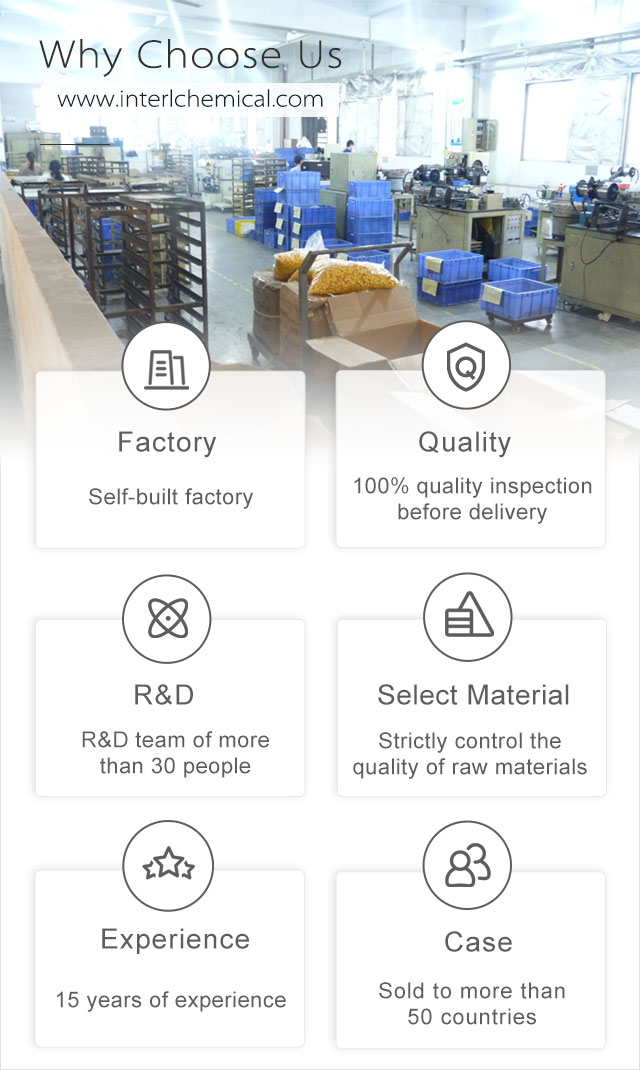

Related Attributes
Product details
Gibberellin is a widely available Plant Growth Regulator. The chemical structure is a diterpenoid acid derived from a tetracyclic skeleton. There are at least 38 types of erythromycin, which are used in agricultural It is used in agricultural production to stimulate leaf and shoot growth and increase yields. It mainly acts on crops to induce more male flowers in cucumbers and watermelons, to promote the germination of potatoes, peas and lentils In addition, it can make celery, spinach, loose leaf lettuce leaf fat, improve the fruiting rate of cucumber, eggplant and tomato, and spray watermelon with 4% gibberellin solution before harvesting. In addition, spraying watermelon with 4% erythromycin solution before harvest can also effectively extend the storage period of watermelon. The product can be mixed with general pesticides, and can be mutually reinforcing. If too much erythromycin is used, the side effects can cause collapse, so often use It can be adjusted. It cannot be mixed with alkaline substances, but it can be mixed with acidic and neutral fertilizers and pesticides, and it has a better effect of increasing yield when mixed with urea.

Pharmacokinetics of Gibberellic Acid:
All erythromycins contain the gibberellic acid skeleton, which has a complex chemical structure and is a diterpene compound. The precursor of erythromycin in higher plants is generally considered to be shellacene. Erythromycin The basic structure of erythromycin is the erythromycin alkane, which has four rings. On erythromycin alkanes, various erythromycins are formed due to different numbers and positions of double bonds and hydroxyl groups . Free state gibberellins gibberellins are mono-, di- or tricarboxylic acids with 19C or 20C. The bound erythromycin is mostly glucoside or glucosyl ester, which is easily soluble in water. Erythromycin is widely distributed in angiosperms, gymnosperms, ferns It is mostly found in actively growing parts, such as stem ends, young leaves, root tips and fruit seeds. Fruits and seeds, especially immature seeds The gibberellin content of fruits and seeds, especially immature seeds, is two orders of magnitude more than that of nutrient organs. Contact us for more.

Formulation Selection.
| Type | Advantages | Applicable Scenarios |
| Active Ingredient | Low cost | Large farms |
| Soluble Powder | Easy to use | Small and medium-sized farms |
| Liquid | Ready to use | Home gardening |
| Compound Formulation | Comprehensive functionality | Cash crops |
Clinical Application of Gibberellic Acid:
Gibberellic acid has a 100% efficiency on the crop, with a long-lasting effect, more efficient, more stable and safer, and is best sprayed from the seedling stage to develop the root system and prevent diseases. It can prevent diseases, it can significantly promote the growth of plant stems and leaves, such as spraying during the growth period, it can also make the nutrient balance, help the crop growth, spraying during the flowering period, it can protect the flowers and fruits, also can make the fruit swell and expand, It can also make the fruit expand, more beautiful fruit effect, cotton flowering period spraying can effectively reduce the boll shedding, improve the boll rate, and can effectively lift the crop disease. Suitable for Potatoes, tomatoes, rice, wheat, cotton, soybeans, tobacco, fruit trees and other crops to promote their growth, germination, flowering and fruiting; can stimulate fruit growth, improve the fruit set rate, on Rice, cotton, vegetables, melons and fruits, green manure, etc. have significant yield increasing effect. Specific effects are as follows:
1. elongation and growth of stems and leaves, inducing the formation of α-amylase
2. Accelerate cell division, longitudinal elongation of mature cells and elongation of internodes
3. Inhibit tuber formation
4. Inhibit dormancy and senescence of lateral buds
5. Increase growth hormone level and apical dominance

Professional FAQ.
Q1: How long is the residual period?
A: It usually takes 7-10 days to completely degrade, with no risk of residue.
Q2: Can it be used on organically certified crops?
A: It is not permitted in China, but some European and American countries have limited permits.
Q3: What should I do if the effect is not obvious?
A: Check the application period, temperature, and nutritional content.
Q4: How should it be stored?
A: Store in a cool, dry place away from light, with a temperature between 4-25°C.
Q5: Is it harmful to humans?
A: Safe when used normally; avoid direct contact.
Why choose us?

HRK Factory

About Shipping

Pharmaceutical Intermediate manufacturers
©2023 Xi'an Henrikang Biotech Co., Ltd.,